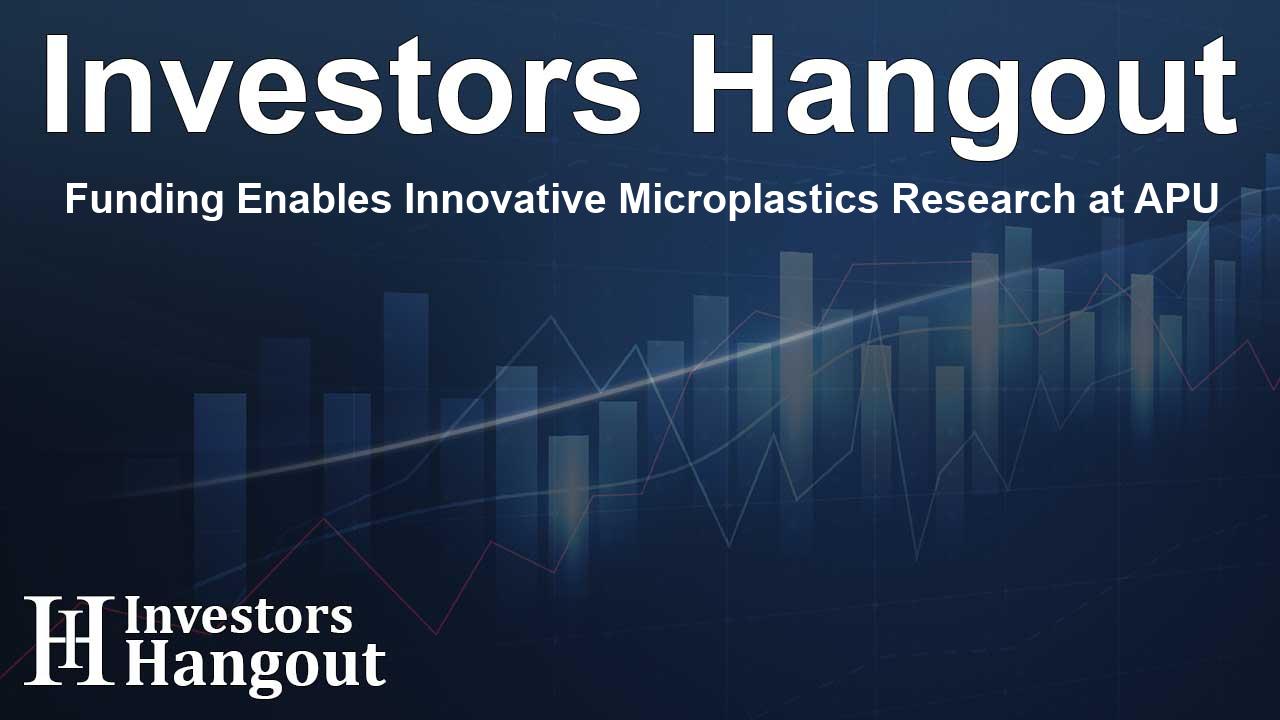Funding Enables Innovative Microplastics Research at APU

APU Secures Significant NASA Funding for Environmental Research
Alaska Pacific University (APU) is taking major strides in environmental research thanks to a substantial grant from NASA, totaling nearly $5 million. This landmark funding is intended for a dedicated Microplastics Research and Education Center, aimed at addressing the pressing issue of microplastics and other contaminants in water systems.
Understanding Microplastics and Their Impact
The concern over microplastics—tiny plastic particles that measure less than 5 millimeters—has gained increased attention worldwide. These particles have permeated numerous ecosystems, including remote areas of Alaska, where they're found in traditional subsistence foods as well as in natural water sources. The APU initiative aims to gather critical data on microplastic prevalence and its impending effects on wildlife and human health.
Building Research Capabilities
To kickstart this transformative project, the initial year of funding has been dedicated to establishing state-of-the-art facilities and analytical capabilities at the Alaska and Arctic Waterways Analytics (AAWA) Lab. The lab's aim is to become a self-sustaining, accredited facility that will not only test for microplastics but also investigate per- and polyfluoroalkyl substances (PFAS) in water samples across Alaska.
Education and Training for Future Generations
In addition to groundbreaking research, this project harbors a strong educational component. APU students will have opportunities to gain hands-on experience through internships and funded research, setting them up for future careers in environmental science and public health.
Collaborative Efforts in Microplastics Research
The project is spearheaded by Dr. Dee Barker and supported by APU faculty and researchers from esteemed institutions. This collaboration will lead to an intricate investigation of how microplastics migrate through various water systems, ranging from urban areas to pristine environments, while assessing their impact on local ecosystems.
A Holistic Approach to Environmental Issues
The unique research model adopted by APU embraces a 'One Health' approach, merging Western scientific methodologies with Alaska Native Traditional Knowledge. This integrated framework is vital in comprehensively understanding eco-health concerns and informing the surrounding communities.
Expanding Community Engagement
Part of the initiative includes outreach programs aimed at K-12 students and community members, promoting awareness about microplastics and teaching data collection skills. Workshops will provide practical insights into addressing plastic pollution, fostering a culture of environmental stewardship.
Future Goals and Objectives
The overarching goals of the Microplastics Research and Education Center include:
- Research: Conduct thorough investigations into microplastics in Alaskan waterways using validated scientific methods.
- Tracking: Utilize advanced satellite technology to monitor and map microplastic distribution and migration patterns globally.
- Education: Enhance educational opportunities and career pathways for APU students, with a focus on environmental health challenges.
Dr. Barker's dedication to the study of microplastics stems from firsthand experiences of finding plastic traces in bottled water, sparking her interest in examining their presence in Alaska's pure waters.
About Alaska Pacific University
APU is committed to delivering a world-class educational experience that is culturally responsive and inclusive. As a fully accredited educational institution, APU merges academic rigor with community involvement, offering programs from certificates to doctoral degrees. The university deeply honors its relationship with the Dena'ina people and is dedicated to intertwining Indigenous heritage into its educational outreach.
Frequently Asked Questions
What is the purpose of the NASA funding for APU?
The funding aims to establish a Microplastics Research and Education Center focused on tackling microplastics pollution and enhancing educational opportunities for students.
How is APU addressing the issue of microplastics?
APU's research initiative aims to detect, track, and analyze microplastics in various ecosystems, particularly focusing on Alaskan waterways.
What are the benefits for APU students involved in this project?
Students will gain internship experiences, tuition stipends, and hands-on research opportunities, preparing them for careers in environmental science and public health.
What is the 'One Health' approach?
The 'One Health' approach integrates environmental health with community and wildlife health to create a comprehensive understanding of the interconnectedness of these systems.
How can the community engage with APU's research project?
The initiative includes workshops and outreach efforts directed at K-12 students and the general public to raise awareness about microplastics and encourage proactive community involvement.
About The Author
Contact Thomas Cooper privately here. Or send an email with ATTN: Thomas Cooper as the subject to contact@investorshangout.com.
About Investors Hangout
Investors Hangout is a leading online stock forum for financial discussion and learning, offering a wide range of free tools and resources. It draws in traders of all levels, who exchange market knowledge, investigate trading tactics, and keep an eye on industry developments in real time. Featuring financial articles, stock message boards, quotes, charts, company profiles, and live news updates. Through cooperative learning and a wealth of informational resources, it helps users from novices creating their first portfolios to experts honing their techniques. Join Investors Hangout today: https://investorshangout.com/
The content of this article is based on factual, publicly available information and does not represent legal, financial, or investment advice. Investors Hangout does not offer financial advice, and the author is not a licensed financial advisor. Consult a qualified advisor before making any financial or investment decisions based on this article. This article should not be considered advice to purchase, sell, or hold any securities or other investments. If any of the material provided here is inaccurate, please contact us for corrections.
